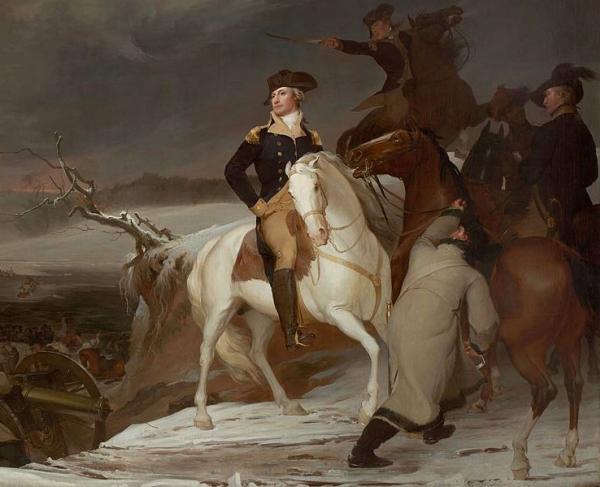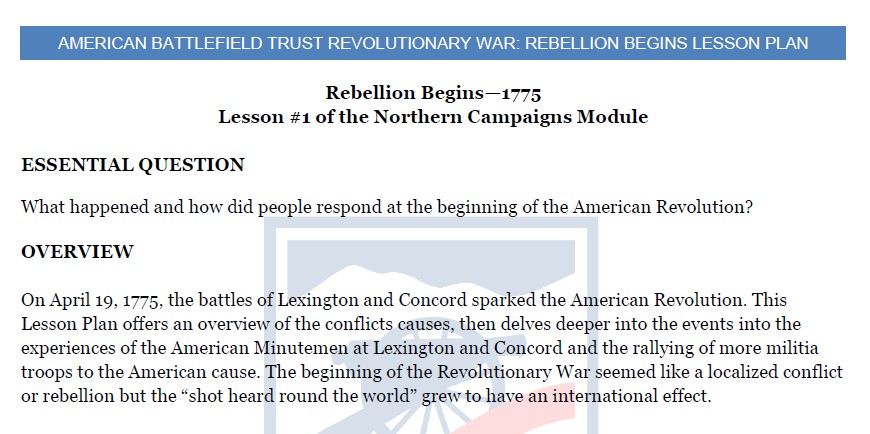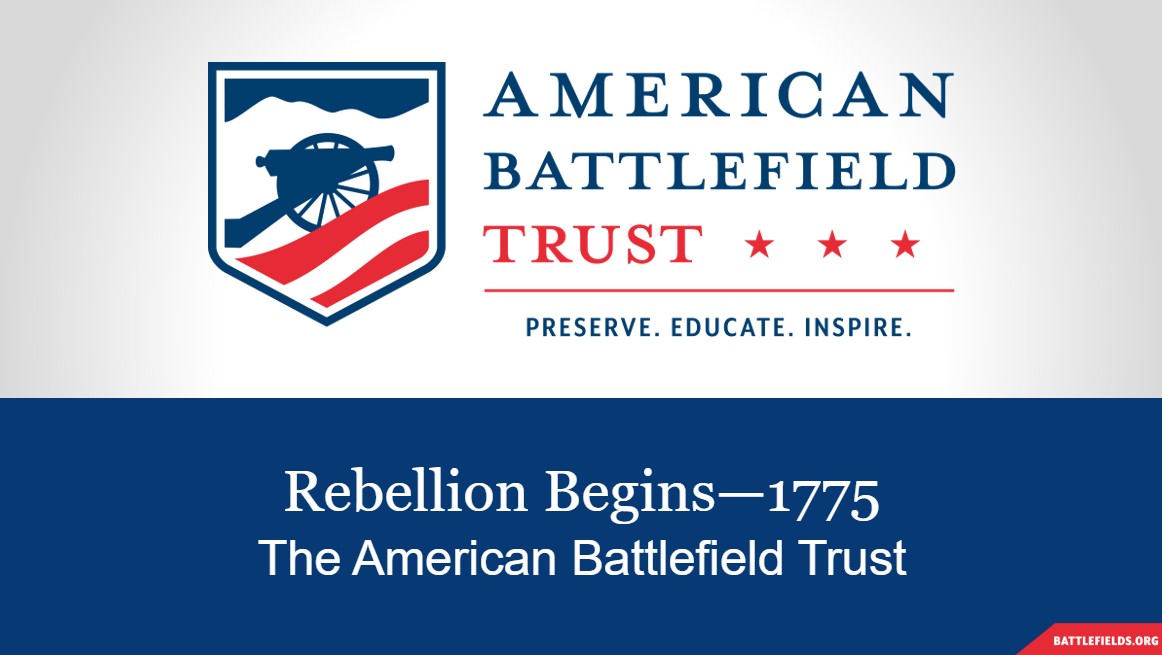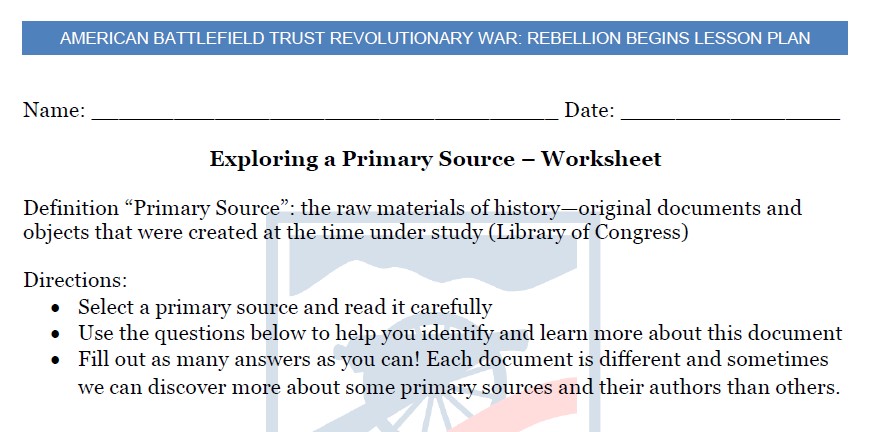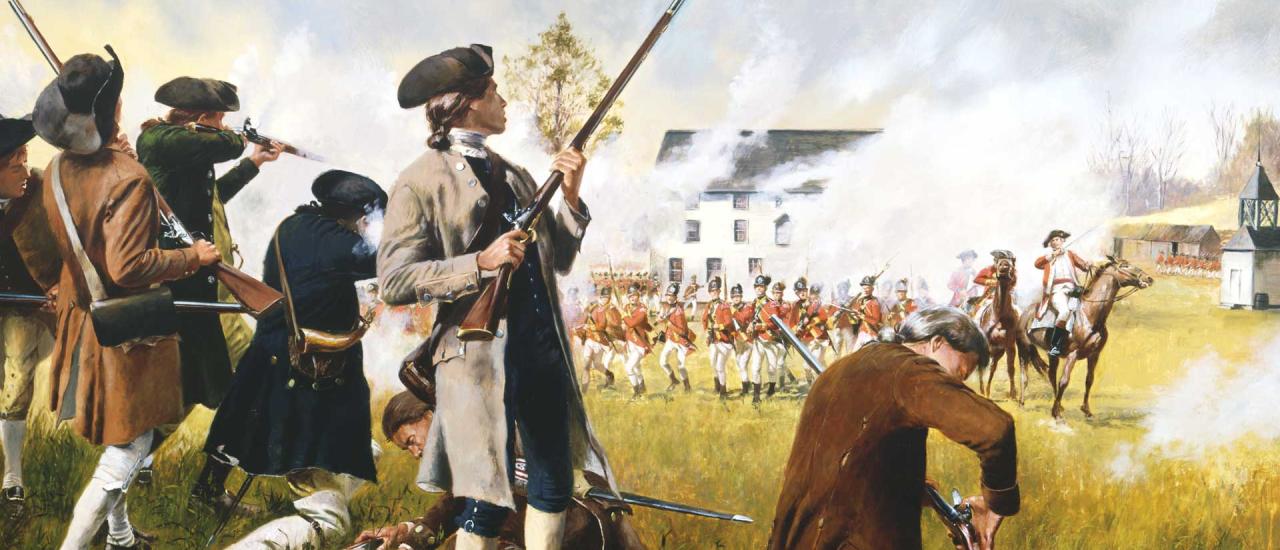
"Stand Your Ground," painting by Don Troiani.
Rebellion Begins—1775 Lesson Plan
A lesson plan for use in middle and high school classrooms.
On April 19, 1775, the battles of Lexington and Concord sparked the American Revolution. This Lesson Plan offers an overview of the conflicts causes, then delves deeper into the events into the experiences of the American Minutemen at Lexington and Concord and the rallying of more militia troops to the American cause. The beginning of the Revolutionary War seemed like a localized conflict or rebellion but the “shot heard round the world” grew to have an international effect.
This Lesson Plan can be used as a prepared resource by following this curriculum plan which aligns to NCSS and Common Core Standards.
This Lesson Plan's assets can also be used on their own as supplemental resources. The display format is prepared for easy access, exploring, and learning.
The Northern Campaigns Module
Upon completion of this lesson, the students will be able to:
- Knowledge
- Describe events that sparked the Revolutionary War in 1775
- Discuss people’s reactions to the fighting at Lexington and Concord
2. Comprehension/Application/Analysis
- Read, chart, and discuss primary source documents about Lexington and Concord
3. Evaluation
- Evaluate and discuss the effects of the opening conflict of the Revolutionary War
Check out the Lesson Plan Teaching Guide for more instructions on using the prepared Lesson Plan.
Lesson Plan Primary Source Activity
- Use the Lesson’s PowerPoint to explore the context and history; the PowerPoint introduces Essential Questions and lays foundational knowledge about the conflict.
- Watch “Lexington & Concord In4” Video
- Distribute the primary source worksheets and have the students explore one or more of the provided primary sources about the Battles of Lexington and Concord and reactions to the conflict. (This could be a group activity with multiple students working on a primary source together.)
- Have the students share their findings from the primary sources and have the class answer the lesson plan question collectively, using the summary worksheet. 7 selected primary sources are available under the “Primary Source” section this lesson plan page.
OPTIONAL HOMEWORK/ASSESSMENT/ADDITIONAL ACTIVITIES:
Option 1: Biographies
Students read the selected biographies related to this lesson plan and answer the question with a written paragraph or short essay addressing: “How did this individual respond to the beginning of the Revolutionary War?” Selected biographies are listed here.
Option 2: Before Lexington & Concord
Have the students watch “Paul Revere’s Ride In4”, read the biography of Revere, and explore the article about the Myths of Paul Revere. The students will then write a three paragraphs essay explaining who Revere was and what he did on April 18, 1775, followed by how his actions have been remembered. Students could also create art visualizing the legacy and historical memory of Paul Revere.
Common Core State Standards- ELA & History/Social Studies
Grades 6-8
- Key Ideas and Details:
- CCSS.ELA-LITERACY.RH.6-8.1
- Cite specific textual evidence to support analysis of primary and secondary sources.
- CCSS.ELA-LITERACY.RH.6-8.2
- Determine the central ideas or information of a primary or secondary source; provide an accurate summary of the source distinct from prior knowledge or opinions.
- CCSS.ELA-LITERACY.RH.6-8.1
- Craft and Structure:
- CCSS.ELA-LITERACY.RH.6-8.4
- Determine the meaning of words and phrases as they are used in a text, including vocabulary specific to domains related to history/social studies.
- CCSS.ELA-LITERACY.RH.6-8.6
- Identify aspects of a text that reveal an author's point of view or purpose (e.g., loaded language, inclusion or avoidance of particular facts).
- CCSS.ELA-LITERACY.RH.6-8.4
- Integration of Knowledge and Ideas:
- CCSS.ELA-LITERACY.RH.6-8.8
- Distinguish among fact, opinion, and reasoned judgment in a text.
- CCSS.ELA-LITERACY.RH.6-8.8
Grades 9-10
- Key Ideas and Details:
- CCSS.ELA-LITERACY.RH.9-10.1
- Cite specific textual evidence to support analysis of primary and secondary sources, attending to such features as the date and origin of the information.
- CCSS.ELA-LITERACY.RH.9-10.2
- Determine the central ideas or information of a primary or secondary source; provide an accurate summary of how key events or ideas develop over the course of the text.
- CCSS.ELA-LITERACY.RH.9-10.3
- Analyze in detail a series of events described in a text; determine whether earlier events caused later ones or simply preceded them.
- CCSS.ELA-LITERACY.RH.9-10.1
- Craft and Structure:
- CCSS.ELA-LITERACY.RH.9-10.4
- Determine the meaning of words and phrases as they are used in a text, including vocabulary describing political, social, or economic aspects of history/social science.
- CCSS.ELA-LITERACY.RH.9-10.5
- Analyze how a text uses structure to emphasize key points or advance an explanation or analysis.
- Integration of Knowledge and Ideas:
- CCSS.ELA-LITERACY.RH.9-10.8
- Assess the extent to which the reasoning and evidence in a text support the author's claims.
- CCSS.ELA-LITERACY.RH.9-10.8
Grades 11-12
- Key Ideas and Details:
- CCSS.ELA-LITERACY.RH.11-12.2
- Determine the central ideas or information of a primary or secondary source; provide an accurate summary that makes clear the relationships among the key details and ideas.
- CCSS.ELA-LITERACY.RH.11-12.2
- Craft and Structure:
- CCSS.ELA-LITERACY.RH.11-12.6
- Evaluate authors' differing points of view on the same historical event or issue by assessing the authors' claims, reasoning, and evidence.
- CCSS.ELA-LITERACY.RH.11-12.6
- Integration of Knowledge and Ideas:
- CCSS.ELA-LITERACY.RH.11-12.8
- Evaluate an author's premises, claims, and evidence by corroborating or challenging them with other information.
- CCSS.ELA-LITERACY.RH.11-12.8
Social Studies - National Council for the Social Studies
- Theme 1: Culture
- Theme 3: People, Places, or Environments
- Theme 4: Individual Development and Identity
- Theme 5: Individuals, Groups, and Institutions
This Lesson plan
contains the following:
3 Activities | 22 Resources
Audience: Middle school | High school
This Lesson plan is a part of:
Revolutionary War Curriculum | The Northern Campaigns Module
